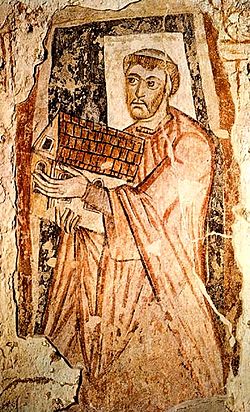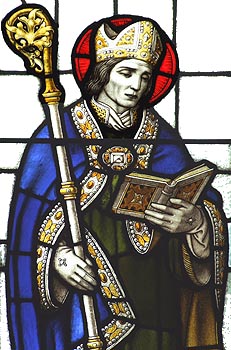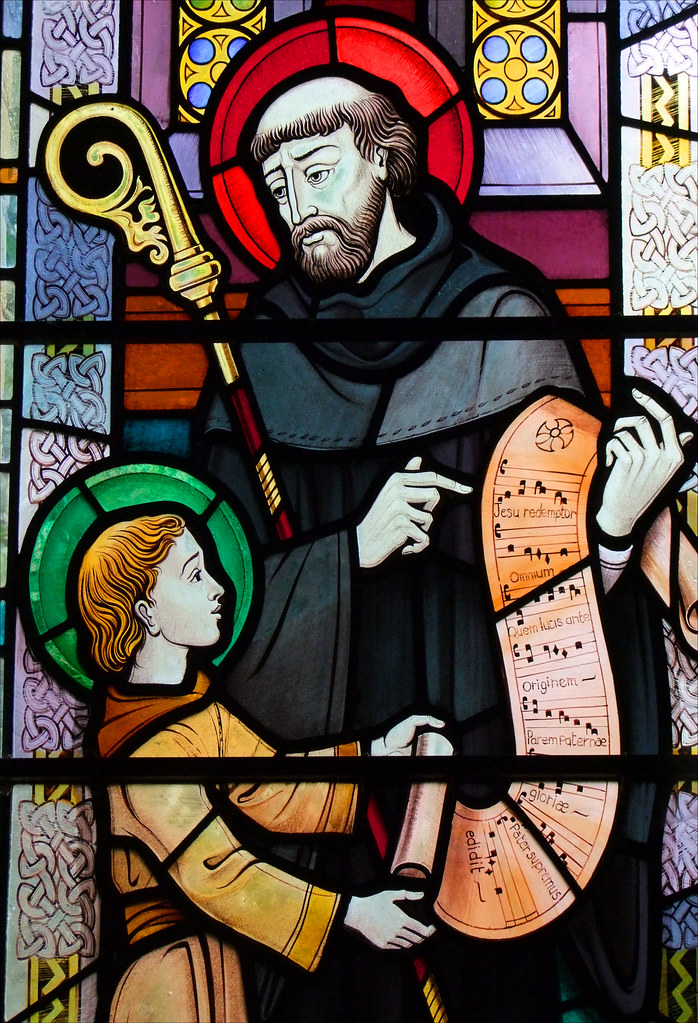Benedict Biscop
Benedict Biscop Baducing (* 628, † 690 ) was an English monk from Northumbria, the Rule of St. Benedict felt obliged, traveled five times to Rome, founded two monasteries and a major influence on the precursors of Benediktinertums in England.
Life
Biscop was in his younger years in the wake of King Oswiu. Later, he had the opportunity to travel together with Wilfrid of Lindisfarne to Rome. He subsequently lived 665-667 as a monk in the Benedictine Abbey of Lérins on the island of Saint- Honorat near Cannes. Here, as suspected Knowles, he took the name Benedict.
Then Biscop returned to Rome and traveled on behalf of Pope Vitalian together with Theodore of Tarsus, the future Archbishop of Canterbury, back to England, where he in the year 669 for two years, the Office of the Abbot of St. Peter and Paul in Canterbury took over.
After the arrival of the Neapolitan Hadrian, who succeeded him as abbot, Biscop traveled a third time to Rome, after which he returned to his home in Northumbria, where thanks to the land grant by King Ecgfrith, Oswius son, the Benedictine Monkwearmouth ( 674 ) and the associated could priory Jarrow ( 681 ) with Ceolfrid form as prior. At the beginning of each of the two monasteries had about 22 monks and a school for boys. In the school of Monkwearmouth later joined Beda as a seven year-old boy at a time when he could get to know Biscop as abbot.
Benedict's rule provides in section 64 that the abbots from the community of monks can be selected. In Biscops times, however, it was common for some time that the right to appoint the abbot, was claimed by the competent diocesan bishop or the founder of the monastery. Accordingly, it is noteworthy that succeeded Biscop to get for his two foundations a papal privilege that granted two monasteries the right to free choice of the abbot or the prior. In his last speech to his monks, he stressed how important it was to defend this law in the future.










